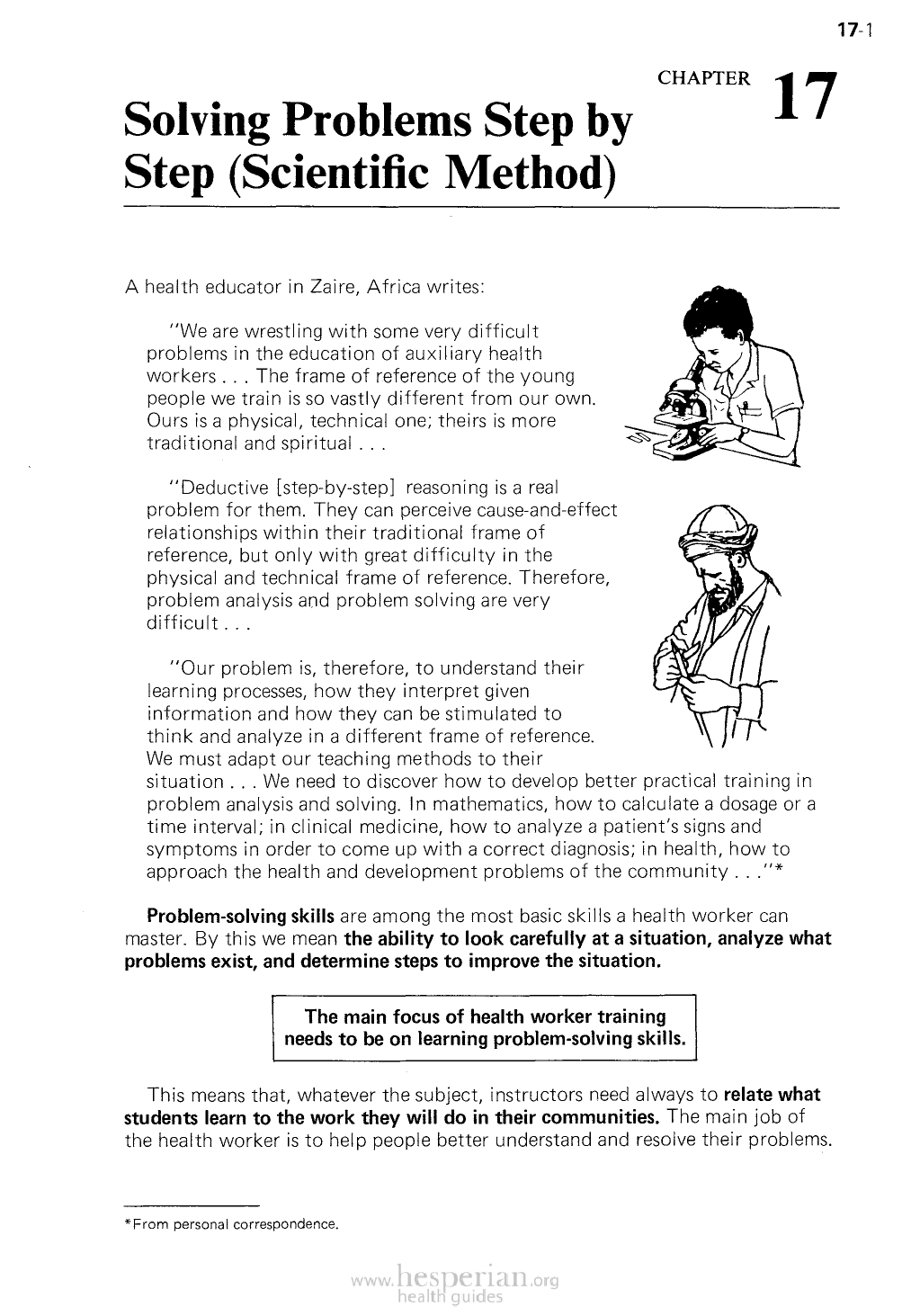
Solving Problems Step
by Step (Scientific Method)
17CHAPTER
17-1
A health educator in Zaire, Africa writes:
“We are wrestling with some very difficult
problems in the education of auxiliary health
workers . . . The frame of reference of the young
people we train is so vastly different from our own.
Ours is a physical, technical one; theirs is more
traditional and spiritual . . .
“Deductive [step-by-step] reasoning is a real
problem for them. They can perceive cause-and-
effect relationships within their traditional frame of
reference, but only with great difficulty in the physical
and technical frame of reference. Therefore, problem
analysis and problem solving are very difficult. . .
“Our problem is, therefore, to understand their
learning processes, how they interpret given
information and how they can be stimulated to think
and analyze in a different frame of reference. We
must adapt our teaching methods to their situation ...
We need to discover how to develop better practical
training in problem analysis and solving. In mathematics, how to calculate a dosage or
a time interval; in clinical medicine, how to analyze a patient’s signs and symptoms in
order to come up with a correct diagnosis; in health, how to approach the health and
development problems of the community . . .”*
Problem-solving skills are among the most basic skills a health worker can
master. By this we mean the ability to look carefully at a situation, analyze what
problems exist, and determine steps to improve the situation.
The main focus of health worker training
needs to be on learning problem-solving skills.
This means that, whatever the subject, instructors need always to relate what
students learn to the work they will do in their communities. The main job of
the health worker is to help people better understand and resolve their problems.
*From personal correspondence.